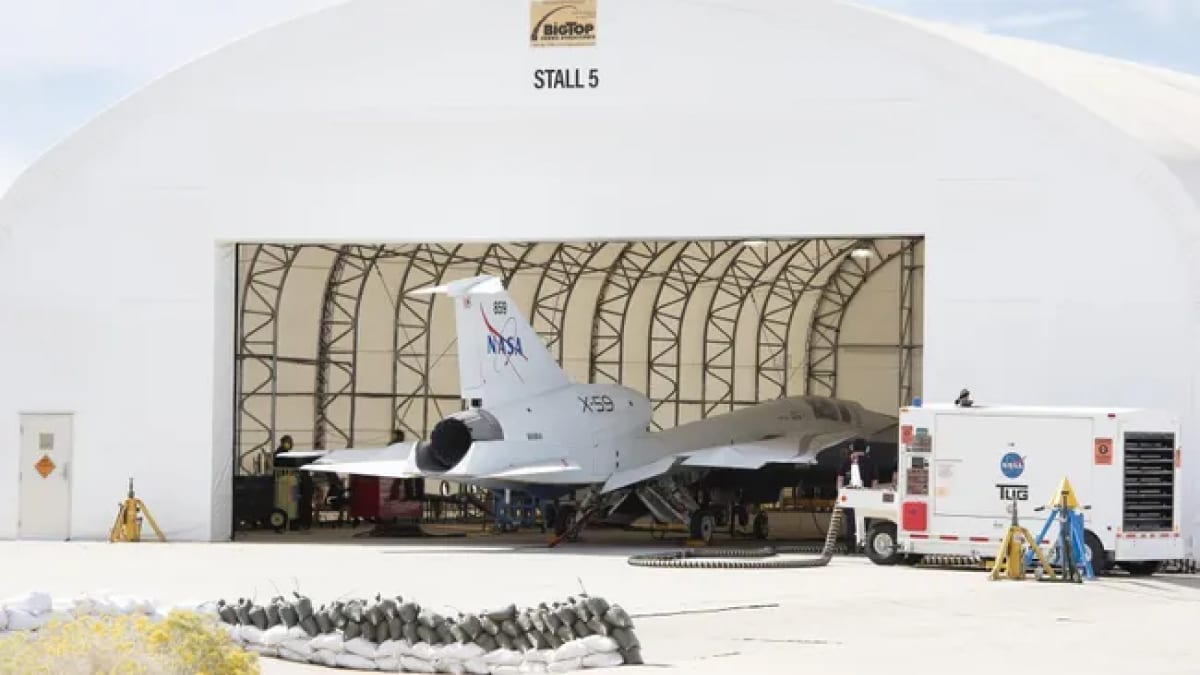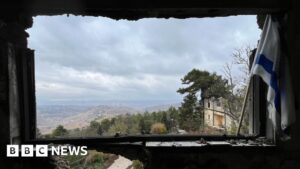
NASA’s experimental X-59 Quiet SuperSonic Technology (Quesst) aircraft has reached a crucial testing milestone with its engine fired up for the first time. Since late October, engineers at Lockheed Martin’s Skunk Works facility in Palmdale, California, have been carrying out phased engine tests to evaluate the X-59’s performance and systems integration. These tests mark a significant step toward the aircraft’s initial flight, though an official date for this event has not been determined.
Engine Tests and Performance Evaluations
Engine tests began with low-speed operations, allowing engineers to inspect for leaks and verify that key systems, such as hydraulics and electrical components, function smoothly with the engine running. Once basic checks were complete, the X-59’s engine was powered up in full for an initial assessment. Jay Brandon, NASA’s X-59 chief engineer, explained that the tests served as a “warmup” to ensure the engine performed correctly and supported various critical aircraft systems.
The jet operates with a modified F414-GE-100 engine, a version of the F414 series used in the U.S. Navy’s Boeing F/A-18 Super Hornet. To predict the sound levels the X-59 might produce, NASA has used F/A-18 jets to simulate the aircraft’s unique sound profile, which is quieter than conventional sonic booms.
Design Features and Goals
The X-59 is designed to reach Mach 1.4, with a target altitude of 55,000 feet. Its long, streamlined nose — extending over 11 meters — is crafted to reduce sonic booms to a mild “thump” sound, instead of the disruptive noise traditionally associated with supersonic travel. With its shape, the X-59 could support regulatory shifts allowing quieter supersonic flights over populated areas.
In January 2024, NASA unveiled the X-59’s revolutionary cockpit design, which lacks a forward-facing window. To compensate, pilots rely on an “eXternal Vision System” that provides a forward view via a digital display, combining camera feeds with augmented reality. Pam Melroy, NASA Deputy Administrator, highlighted this technology as a means to overcome limitations in visibility due to the aircraft’s design.
Next Steps and Community Research
Upcoming testing phases will examine the aircraft’s responses to different simulated scenarios and include taxi tests to ensure smooth ground operation. Once airborne, the X-59 will fly over select U.S. cities to gauge public response to its quieter sound profile. Data gathered will support NASA’s goal of demonstrating viable, noise-minimised supersonic flight for potential future commercial applications.



